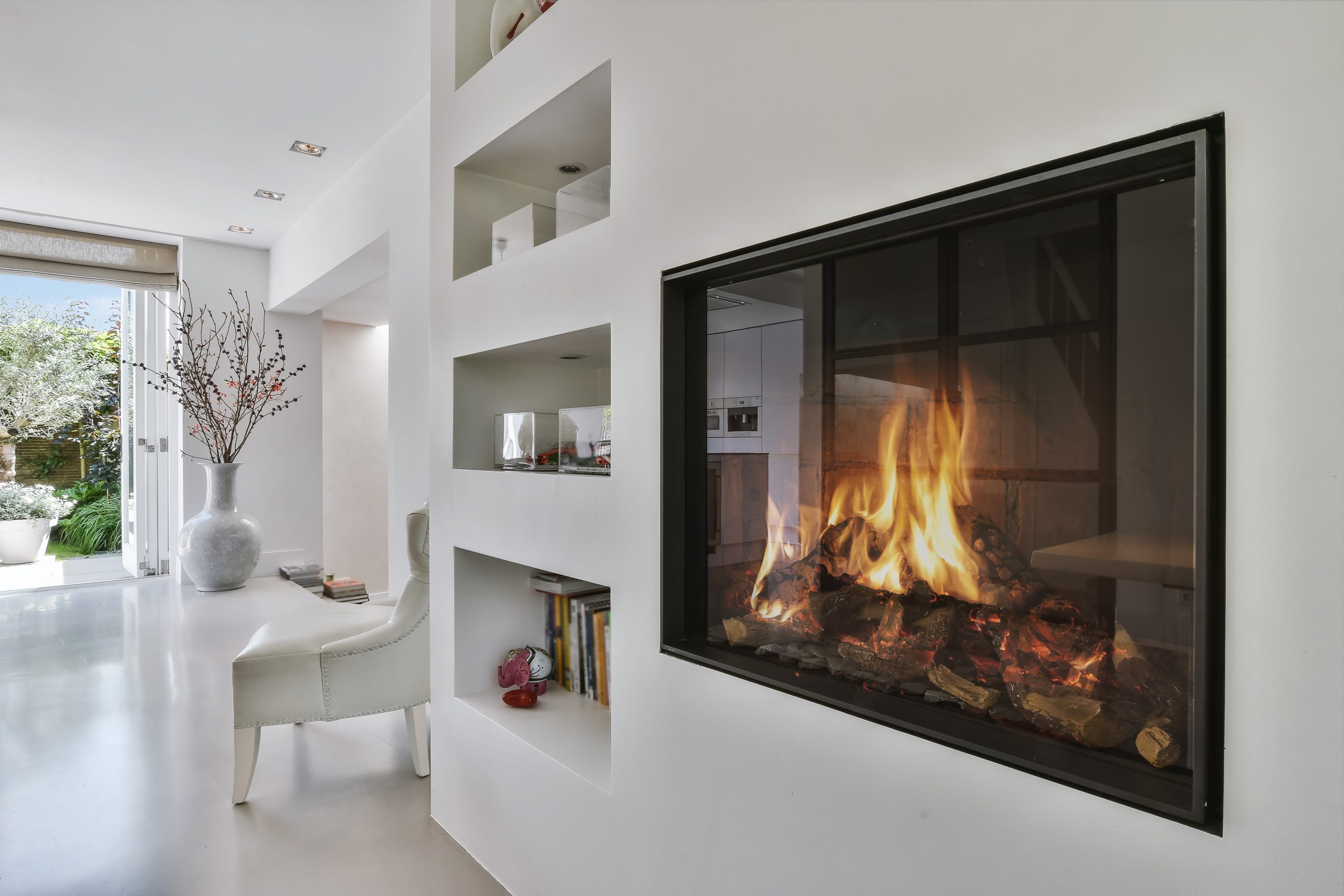
Exploring the Different Types of Fireplaces
When it comes to choosing a fireplace, there’s more to consider than just looks. From traditional wood-burning hearths to modern electric units, today’s fireplaces come in a wide range of fuel types, features, and design styles. Whether you’re planning a new build, remodeling an existing fireplace, or simply researching your options, understanding the pros and cons of each type can help you make an informed decision. In this section, we break down the most popular types of fireplaces—wood, gas, electric, pellet, and more—to help you find the best fit for your lifestyle, home layout, and heating needs.
Here’s a closer look at each option and what makes it unique:
Wood-Burning Fireplace
The classic choice. Uses logs and real flame. Typically built into a masonry chimney.
Pros:
- Authentic ambiance with real flames, crackle, and scent
- No electricity/gas required
- High visual appeal, especially in traditional homes
Cons:
- Requires a chimney and regular maintenance (cleaning, inspections)
- Less efficient—much of the heat escapes through the chimney
- More emissions and environmental impact than other types
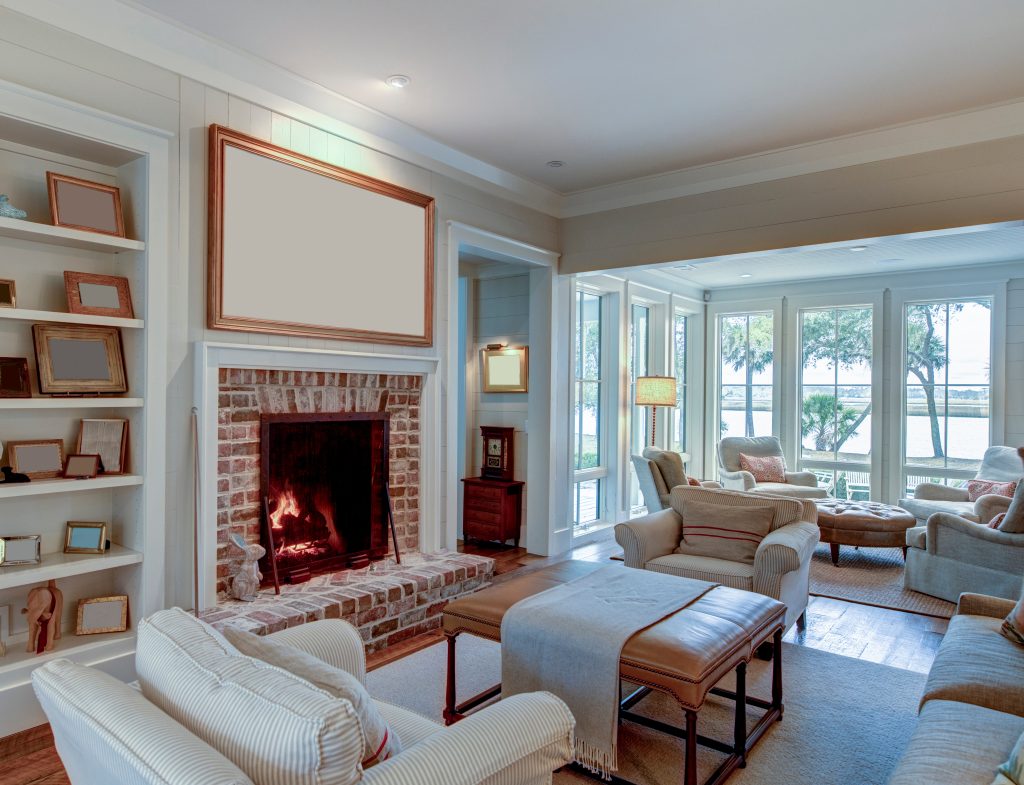
Gas Fireplace (Vented)
Fueled by natural gas or propane, these units mimic a real flame but use ceramic logs or glass media. Vented models exhaust combustion gases outdoors.
Pros:
- Convenient—turn on/off with a switch or remote
- Cleaner-burning than wood
- Provides consistent heat
- Realistic flame appearance
Cons:
- Requires gas line installation
- Still needs venting/chimney system
- Less eco-friendly than electric

Gas Fireplace (Ventless / Vent-Free)
Like vented gas fireplaces, but they don’t require a chimney or flue. They release combustion byproducts directly into the room.
Pros:
- Easier and cheaper to install
- High efficiency—almost all heat stays in the room
- Good option for remodels without chimney access
Cons:
- Not allowed in all jurisdictions (check local code)
- Adds moisture and low levels of combustion gases to the air
- Less realistic flame quality

Electric Fireplace
Uses electricity to simulate flame visuals (LED, projection) and produce heat via a fan-forced heater or infrared element.
Pros:
- No gas, chimney, or venting required
- Easy to install anywhere—great for apartments or remodels
- Safe for kids and pets
- Low maintenance
Cons:
- Flame is simulated, not real
- Dependent on electricity
- Lower heat output than gas or wood options
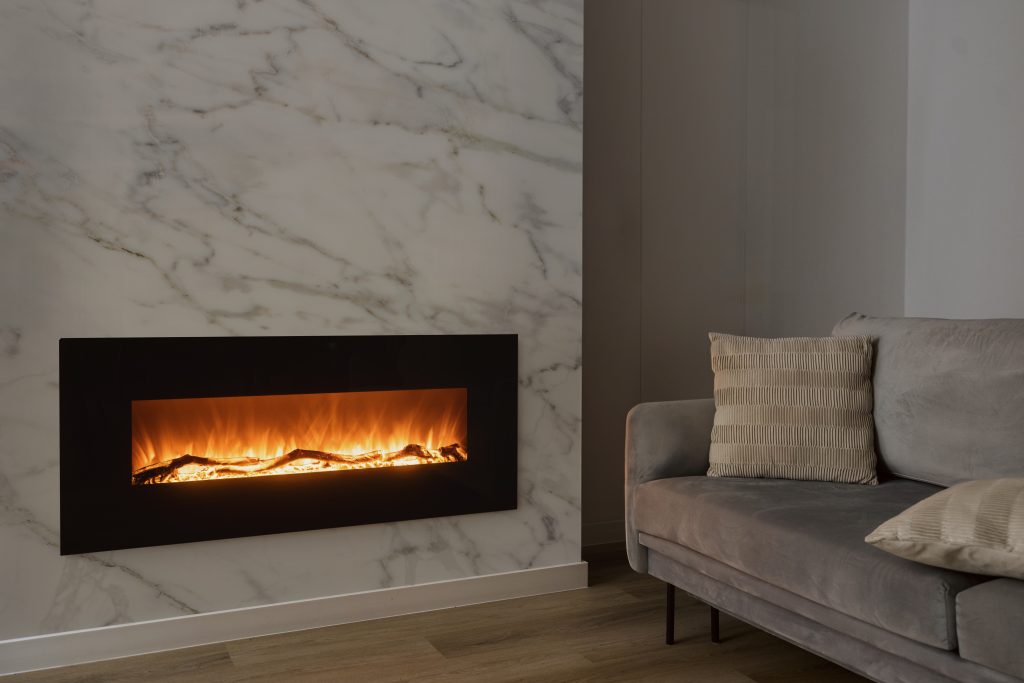
Pellet Fireplace (Stove or Insert)
Burns compressed wood pellets. Often freestanding or inserted into an existing firebox. Requires electricity for the feeder system.
Pros:
- High-efficiency, low-emission
- Renewable fuel source
- Long burn times with automatic feeding
Cons:
- Requires electricity
- Pellet storage and occasional hopper filling
- Upfront cost can be higher than standard wood/gas
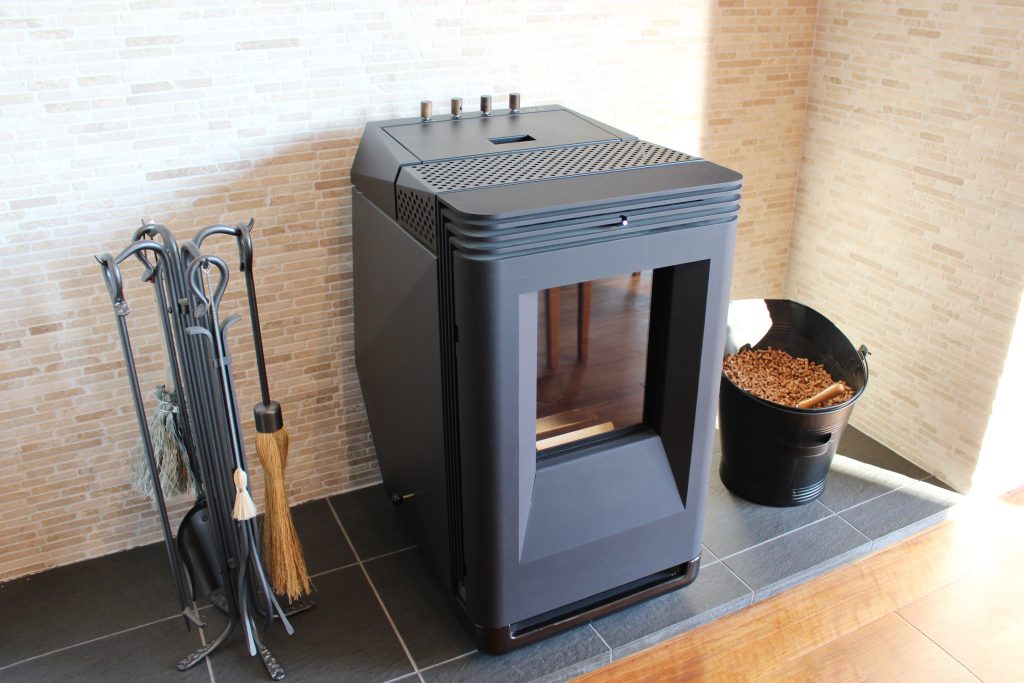
Ethanol Fireplace
Burns bioethanol fuel. No chimney or venting needed. Available in tabletop, wall-mounted, or built-in styles.
Pros:
- Clean-burning and eco-friendly
- Stylish, modern designs
- Ventless and mobile—flexible placement
Cons:
- Limited heat output—best for ambiance
- Fuel can be pricey
- Must be refilled manually

Outdoor Fireplaces (Wood, Gas, or Electric)
Exterior fireplace options for patios or yards. Available in all fuel types depending on setup and access.
Pros:
- Enhances outdoor living space
- Can be a focal point for entertaining
- Wide range of design and fuel options
Cons:
- Subject to weather and climate use limits
- May require special permits depending on area
- Can be costly if built-in

The Right Choice For You
With so many fireplace options available, finding the right one isn’t just about appearance—it’s about how it fits into your daily life. Your home’s layout, your family’s needs, and even your design style all play a role in determining the best choice. Whether you’re looking for a low-maintenance solution, a statement feature, or an eco-friendly upgrade, this section will help you narrow down your options.
Here’s how to match your ideal fireplace with the way you live and the space you live in:
Family-Friendly with Kids or Pets? → Electric or Vented Gas
Why it fits: These options offer the safety of cool-touch glass or enclosed flames, and they don’t require real fire or combustion in the living space.
Ideal fireplace types:
- Electric Fireplace
- Vented Gas Fireplace
Bonus tip: Wall-mounted electric units are sleek and out of reach for little hands or wagging tails.
Cozy Ambiance for Entertaining? → Wood-Burning or Ethanol
Why it fits: If the feel of a real flame matters most—crackling logs, flickering firelight—these provide maximum ambiance.
Ideal fireplace types:
- Wood-Burning Fireplace
- Ethanol Fireplace
Bonus tip: Ethanol options are especially useful in modern homes without chimneys.
Environmentally Conscious Living? → Pellet or Electric
Why it fits: You’re looking for efficient, low-emission options. Pellet stoves use renewable fuel, and electric models draw from your home’s energy source (or even solar).
Ideal fireplace types:
- Pellet Fireplace
- Electric Fireplace
Bonus tip: Look for EPA-certified pellet units for the cleanest burn.
Minimal Renovation or Apartment Living? → Electric or Ventless Gas
Why it fits: If you can’t install a chimney or run gas lines, go vent-free. These options require little to no structural modification.
Ideal fireplace types:
- Electric Fireplace
- Ventless Gas Fireplace
Bonus tip: Many electric units are plug-and-play—perfect for renters.
Traditional Home with Existing Chimney? → Wood or Vented Gas Insert
Why it fits: You can make the most of an existing masonry fireplace by retrofitting it with an insert that improves efficiency.
Ideal fireplace types:
- Wood-Burning Fireplace
- Vented Gas Insert
Bonus tip: Gas inserts offer remote control and better insulation than open wood-burning setups.
Modern or Minimalist Aesthetic? → Linear Gas or Wall-Mounted Electric
Why it fits: Clean lines and frameless installations complement contemporary interiors beautifully.
Ideal fireplace types:
- Linear Gas Fireplace
- Wall-Mounted Electric Fireplace
Bonus tip: Consider glass media or smooth concrete surrounds for a sleek finish.
Outdoor Living Enthusiast? → Gas, Wood, or Electric Outdoor Units
Why it fits: Create a year-round backyard focal point with weather-resistant units designed for exterior use.
Ideal fireplace types:
- Outdoor Wood Fireplace
- Outdoor Gas Fireplace
- Outdoor Electric Heater with Flame Effects
Bonus tip:Match the fuel source to what’s most accessible (e.g., natural gas line vs. available firewood).



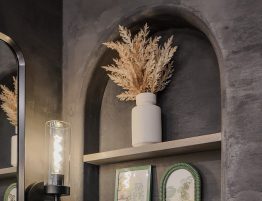
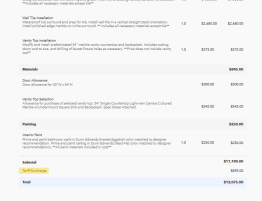



Write a comment: